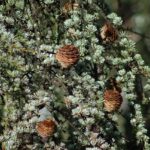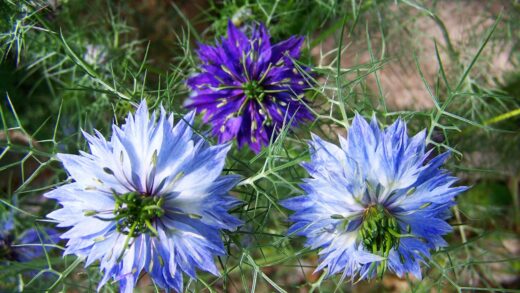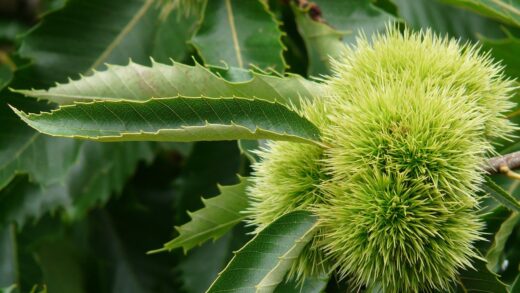Emulating the woodland floor nutrient cycle
The key to understanding the nutritional needs of English bluebells lies in observing their natural woodland habitat. On the forest floor, these plants are part of a highly efficient, closed-loop nutrient system. Each autumn, a fresh layer of leaves, twigs, and other organic debris falls from the trees above, creating a rich blanket of litter. Throughout the winter and spring, this material is slowly broken down by a complex web of fungi, bacteria, and invertebrates. This decomposition process releases a slow, steady supply of essential nutrients directly into the topsoil, precisely where the bluebells’ shallow roots can access them. This natural, gentle feeding cycle is what we must strive to emulate in the garden.
Unlike many heavily cultivated garden plants, English bluebells are not heavy feeders that require frequent applications of strong, concentrated fertilizers. In fact, such treatments can be detrimental, promoting lush, soft foliage at the expense of flowers and potentially even damaging the bulbs. The nutrients they require are best supplied in a complex, organic form that mimics the composition of decomposed leaf litter. The focus should be on building and maintaining a fertile, humus-rich soil rather than on direct, targeted feeding of the plants themselves. This approach fosters a healthy soil ecosystem that nourishes the bluebells naturally and sustainably.
The primary nutrients required by bluebells are the same as for most plants: nitrogen (N) for leafy growth, phosphorus (P) for root and flower development, and potassium (K) for overall plant health and vigour. However, the balance is crucial. The slow decomposition of organic matter on the woodland floor provides these nutrients in a naturally balanced ratio. This prevents the sudden flushes of growth that can be caused by synthetic fertilizers, ensuring the plant develops in a sturdy and resilient manner. The woodland soil also provides a wealth of micronutrients that are essential for healthy growth and are often lacking in artificial feeds.
Therefore, the entire philosophy of feeding English bluebells should pivot away from the concept of ‘fertilizing’ and towards the concept of ‘soil enrichment’. By providing the right conditions and organic materials, you facilitate a natural process that will, in turn, provide the bluebells with everything they need to thrive. This is a more patient and holistic approach to gardening that results in healthier plants, a more resilient garden ecosystem, and a more authentic and beautiful display of bluebells each spring. It is about creating a living soil that cares for the plants, rather than seeing the soil as an inert medium that requires constant chemical inputs.
The primary role of organic matter
For English bluebells, organic matter is the single most important source of nutrition. Materials like garden compost, well-rotted manure, and, most ideally, leaf mould, are the cornerstones of a successful feeding regime. These materials are not just food; they are soil conditioners that improve every aspect of the growing environment. When incorporated into the soil before planting, they create a friable, well-aerated structure that allows roots to penetrate easily. They also dramatically increase the soil’s ability to retain moisture, which is crucial for nutrient uptake by the plant’s roots.
More articles on this topic
The most effective way to provide this ongoing nutrition is through an annual top-dressing or mulch applied in the autumn. After the last of the summer perennials have been cleared away, and just before the winter sets in, a generous layer of organic matter, 5-7 centimetres thick, should be spread over the entire area where the bluebells are dormant. Leaf mould is considered the gold standard for this purpose, as it most perfectly replicates the natural conditions of the woodland floor. As this mulch slowly breaks down over the winter and spring, it releases its nutrients gently and gradually, making them available to the plants just as they begin their active growth.
This process of decomposition is facilitated by a healthy population of soil organisms, from earthworms to microscopic fungi. These creatures are essential partners in nourishing your bluebells. They ingest the organic matter, breaking it down into simpler compounds that the plant roots can absorb. Their activity also helps to mix the organic matter into the soil profile and creates channels that improve aeration and drainage. By consistently providing this organic mulch, you are not just feeding the plants; you are feeding the entire soil food web, which in turn supports the health of your bluebells.
It is important to use well-decomposed organic matter. Fresh or partially rotted materials can temporarily ‘lock up’ nitrogen from the soil as they decompose, making it unavailable to the plants. Well-rotted compost or manure will be dark, crumbly, and have an earthy smell. This indicates that the initial, nitrogen-intensive phase of decomposition is complete and the material is ready to contribute its rich nutrient content to the soil. A yearly application of this nature is typically all the feeding that a healthy, established bluebell colony will ever need.
When to consider supplemental fertilizers
While a regime based on organic mulching is sufficient for English bluebells in most garden situations, there are specific circumstances where a supplemental, gentle fertilizer may be beneficial. This is most often the case when you are starting with very poor, nutrient-deficient soil, or when you are trying to establish a new colony and want to give the young bulbs an extra boost. It can also be useful if an established colony shows signs of declining vigour, such as producing fewer flowers or smaller leaves, despite being well-mulched.
More articles on this topic
If you decide that a supplemental feed is necessary, the choice of fertilizer and the timing of its application are critically important. You should opt for a balanced, slow-release, organic-based fertilizer. A granular feed like bone meal is an excellent choice. Bone meal is naturally rich in phosphorus, which is essential for strong root development and flower production, and it releases its nutrients slowly over a long period. Another good option is a general-purpose granular fertilizer with a balanced N-P-K ratio, but it’s important to choose one that is designed for gentle, long-term feeding rather than a quick-acting chemical feed.
The best time to apply any supplemental fertilizer is in late winter or very early spring, just as the first green shoots are beginning to emerge from the soil. Applying it at this stage ensures that the nutrients will be available in the soil as the plants enter their most active period of growth. Sprinkle the granular fertilizer sparingly over the soil surface around the emerging shoots, following the application rates recommended on the product packaging. It is always better to err on the side of using too little rather than too much. After application, gently rake the granules into the top layer of soil or mulch and water the area if no rain is forecast.
What you must avoid at all costs are high-nitrogen liquid fertilizers. These types of feeds promote rapid, soft, leafy growth that is weak and susceptible to pests and diseases. This lush foliage comes at the expense of flower production, and the sudden rush of nutrients can even shock and damage the bulbs. The feeding strategy for bluebells should always be slow, gentle, and sustained, mirroring the natural processes they are adapted to. Supplemental fertilizers should be seen as a corrective measure for poor soil, not as a routine part of their care.
Recognizing signs of nutrient deficiency
While English bluebells are relatively trouble-free, they can occasionally show signs that indicate a lack of essential nutrients in the soil. Learning to recognize these symptoms can help you to address the problem before it significantly impacts the health and flowering of your colony. One of the most common signs of a general nutrient deficiency is a gradual decline in the overall vigour of the plants. You might notice that the leaves are smaller than in previous years, or that the plants are generally less robust.
A more specific symptom to look out for is a reduction in flowering. If a well-established clump that has previously flowered profusely begins to produce fewer and fewer blooms, or if the flowers it does produce are small and pale, this can be a strong indicator of nutrient depletion, particularly a lack of phosphorus and potassium. This is often a sign that the clump has become overcrowded, with the bulbs competing for a limited supply of nutrients. In this case, lifting, dividing, and replanting the bulbs into soil enriched with fresh compost and a sprinkle of bone meal is the best course of action.
Yellowing leaves, or chlorosis, can also be a sign of a nutrient issue, although it is important to distinguish this from the natural yellowing that occurs after flowering. If the leaves appear pale green or yellow during the active growing season, before the flowers have even faded, it can point to a nitrogen deficiency. However, this is relatively rare in bluebells. More commonly, it could be a sign of an iron deficiency, which is often caused by a soil pH that is too alkaline, ‘locking up’ the iron and making it unavailable to the plant. A soil test can confirm this, and the issue can be addressed by applying an ericaceous compost or a sequestrated iron feed.
It is crucial to rule out other potential causes before concluding that a nutrient deficiency is the problem. Poor flowering can also be caused by insufficient light (for example, if an overhead tree canopy has become too dense), planting the bulbs too shallowly, or removing the foliage too early in the previous season. Stunted growth could be a result of insufficient water during the spring. However, if all other conditions seem optimal and the plants still appear to be struggling, then addressing the soil’s fertility is a logical and necessary next step to restoring your bluebell colony to its former glory.
The importance of soil ph
The pH of your soil, which is a measure of its acidity or alkalinity, plays a crucial, though often overlooked, role in the nutrition of English bluebells. Soil pH directly affects the availability of nutrients to plant roots. Even if a nutrient is abundant in the soil, if the pH is outside the optimal range for a particular plant, that nutrient can become chemically ‘locked up’ and unavailable for uptake. English bluebells thrive in a soil that is slightly acidic to neutral, with a pH range of approximately 5.5 to 7.0. This is typical of the woodland soils in which they naturally grow.
In a soil that is too alkaline (with a pH above 7.5), essential nutrients like phosphorus, iron, and manganese can become less available to the bluebells. This can lead to deficiency symptoms, such as poor flowering (phosphorus deficiency) or yellowing leaves (iron deficiency), even if these nutrients are physically present in the soil. Conversely, in soil that is overly acidic (with a pH below 5.0), other problems can arise, such as an increased solubility of toxic elements like aluminum and a reduced availability of other key nutrients like calcium and magnesium.
Before planting a new bluebell colony, and periodically for established ones, it is a wise investment to test your soil’s pH. Simple, inexpensive home testing kits are widely available and can give you a good indication of your soil’s current state. This knowledge allows you to make targeted amendments to create the ideal growing environment. If your soil is too alkaline, you can gradually lower the pH by incorporating acidic organic matter, such as pine needle mulch or ericaceous compost. In cases of high alkalinity, applying powdered sulphur according to the manufacturer’s instructions can also be effective.
If your soil is too acidic, the pH can be raised by applying ground limestone. However, for bluebells, it is more common to encounter soils that are too alkaline rather than too acidic, as they have a natural tolerance for slightly acidic conditions. Maintaining the correct pH range ensures that the nutrients you provide, whether through organic mulching or supplemental fertilizers, are actually accessible to the plants. It is a fundamental aspect of plant nutrition that forms the foundation of a healthy and floriferous bluebell display, ensuring that your efforts to enrich the soil are not wasted.


















